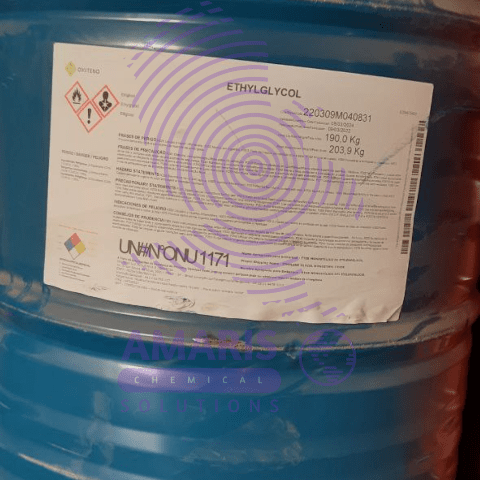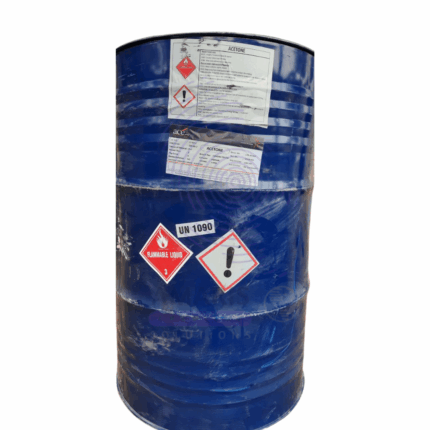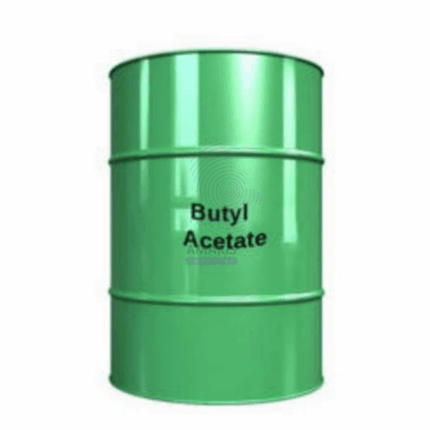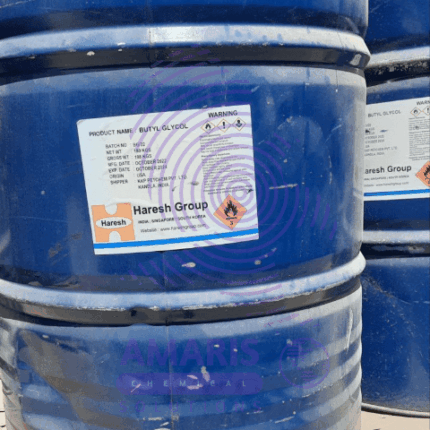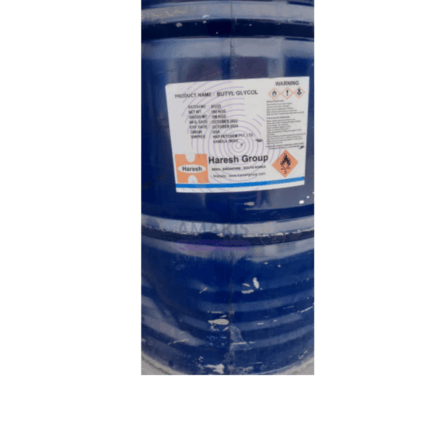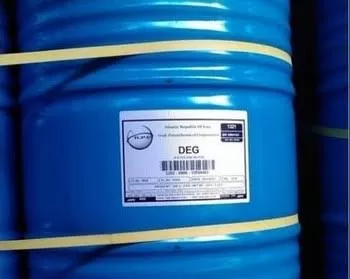
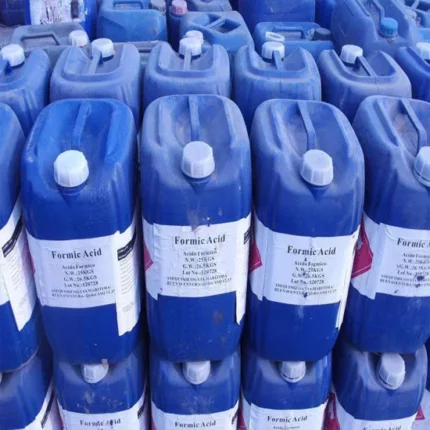
Ethyl Glycol
KSh84,000.00 Original price was: KSh84,000.00.KSh83,000.00Current price is: KSh83,000.00.
Ethyl glycol, also known as ethylene glycol monethyl ether or 2-ethoxyethanol, is a clear, colorless, and slightly viscous liquid with a mild, sweet odor. It is a solvent commonly used in various industries, such as paints and coatings, cleaning products, and printing inks, as well as in the production of resins, lacquers, and pharmaceuticals. Ethyl glycol has a chemical formula of C4H10O2 and a molecular weight of 90.12 g/mol. It is important to handle ethyl glycol with care, as it can be toxic if ingested, inhaled, or absorbed through the skin
Ethyl Glycol Uses
Primary Uses of Ethyl Glycol
-
Antifreeze & Coolants (Major Use: ~50% of global production)
-
Used in vehicle engines (cars, trucks, aircraft) to lower freezing points and raise boiling points of coolant fluids.
-
Prevents engine damage in extreme temperatures.
-
-
Deicing Fluids
-
Applied to aircraft wings, runways, and windshields to melt ice and prevent frost formation.
-
-
Polyester Fiber & Resin Production
-
Key raw material for manufacturing:
-
PET (polyethylene terephthalate) – Used in plastic bottles, food containers, and synthetic textiles.
-
Polyester fibers – For clothing, upholstery, and industrial fabrics.
-
-
-
Heat Transfer Fluids
-
Used in industrial chillers, solar heating systems, and HVAC systems due to its high heat capacity.
-
-
Hydraulic & Brake Fluids
-
Acts as a solvent and lubricant in hydraulic systems and some brake fluids.
-
Secondary Uses of Ethyl Glycol
-
Chemical Intermediates
-
Production of paints, solvents (e.g., glyme), and plasticizers.
-
Used to synthesize ethylene oxide (for detergents and sterilants).
-
-
Electronics
-
Electrolyte solvent in capacitors and lithium-ion batteries.
-
-
Adhesives & Inks
-
Humectant in glues, printing inks, and dyes to prevent drying.
-
-
Pharmaceuticals & Cosmetics
-
Rarely used as a solvent or preservative (limited due to toxicity concerns).
-
-
Gas Dehydration
-
Removes water vapor from natural gas pipelines to prevent corrosion.
-
-
Wood Treatment
-
Preservative for lumber and wood products (prevents fungal growth).
-
| AVAILABLE PACK SIZE |
190kg ( Metal or Plasticdrum) |
|---|---|
| APPEARANCE |
Watery/Thin – Low viscosity e.g., ethanol |
- Basic Identification Attributes
- Chemical Name (IUPAC): 2-Ethoxyethan-1-ol
- Common/Trade Names:
- Ethyl glycol
- Ethylene glycol monoethyl ether (EGME)
- Cellosolve™ (Dow Chemical trade name)
- CAS Number: [110-80-5]
- HS Code: 2909.43.00 (Ether-alcohols and derivatives)
- Molecular Formula: C₄H₁₀O₂
- Synonyms:
- 2-EE
- Ethyl cellosolve
- Oxitol
- Physical & Chemical Properties
- Physical State: Colorless liquid
- Color & Odor: Mild, ether-like odor
- Boiling Point: 135°C (275°F)
- Melting Point: -70°C (-94°F)
- Density: 0.93 g/cm³ at 20°C
- Solubility:
- Miscible with water and most organic solvents
- pH Level: ~6-7 (neutral)
- Vapor Pressure: 3.8 mmHg at 20°C
- Flash Point: 44°C (111°F) (flammable liquid)
- Autoignition Temperature: 235°C (455°F)
- Viscosity: 2.0 cP at 20°C
- Safety & Hazard Attributes
- Hazard Class (GHS):
- Reproductive Toxicity (Category 1B) (H360: May damage fertility or unborn child)
- Flammable Liquid (Category 3) (H226)
- Eye Irritation (Category 2) (H319)
- NFPA Ratings:
- Health: 2 | Flammability: 2 | Reactivity: 0
- Exposure Limits:
- OSHA PEL: 200 ppm (skin)
- ACGIH TLV: 5 ppm (skin)
- Reactivity:
- Stable under normal conditions
- Avoid strong oxidizers
- Storage & Handling Attributes
- Storage Conditions:
- Store in a cool, well-ventilated area
- Keep away from heat and ignition sources
- Incompatible Materials:
- Strong oxidizers, acids, bases
- Container Type:
- Steel or HDPE containers
- Shelf Life: Indefinite if stored properly
- Special Handling:
- Use chemical-resistant gloves (nitrile)
- Eye protection and ventilation required
- Regulatory & Compliance Attributes
- Regulatory Status:
- EPA: Regulated under TSCA
- EU: Restricted under REACH (Annex XVII)
- OSHA: Regulated as hazardous substance
- Hazard Symbols:
- ⚠️ (Health hazard)
- 🔥 (Flammable)
- Transportation Restrictions:
- UN Number: 1171
- Packing Group: III
- Waste Disposal:
- Hazardous waste (EPA/RCRA)
- Environmental & Health Impact
- Ecotoxicity:
- LC50 (fish): 1,000-10,000 mg/L
- Persistence:
- Moderately biodegradable
- Human Health:
- IARC: Group 3 (Not classifiable)
- Reproductive Toxicity: Confirmed
Personal Protection:
- Respiratory:Organic vapor respirator (if vapor/mist present)
- Eyes:Chemical goggles + face shield
- Skin:Nitrile/neoprene gloves + PVC apron
- Body:Chemical-resistant coveralls
Handling Requirements:
- Use only in fume hoodsor well-ventilated areas
- Implement grounding/bondingfor transfer operations
- Prohibit eating/drinking/smokingin work zones
Storage Conditions:
- Store in:
- HDPE or stainless steel containers
- Cool (<25°C), dry, ventilated areas
- Away from oxidizers/acids/heat sources
- Label containers with "Toxic - Antidote Required"
Ingestion (MEDICAL EMERGENCY):
- DO NOT induce vomiting
- Immediate antidote options:
- Fomepizole(preferred)
- Ethanol therapy(IV or oral)
- Hospitalize regardless of symptoms
Eye Contact:
- Flush with lukewarm waterfor 20+ minutes
- Forced eyelid openingrequired
- Immediate ophthalmologist referral
Skin Exposure:
- Remove contaminated clothing
- Wash with soap and copious water(15+ minutes)
- Seek medical attention for >10% BSA exposure
Inhalation:
- Move to fresh air
- Administer oxygenif distressed
- Monitor for delayed pulmonary edema
Extinguishing Media:
- Alcohol-resistant foam (primary)
- CO₂/dry chemical (secondary)
Special Procedures:
- Evacuate downwind (50m minimum)
- Cool tanks with water spray(DO NOT direct stream)
- Contain runoff (toxic to aquatic life)
Spill Management:
- Small spills:
- Absorb with vermiculite/clay
- Collect in chemical waste containers
- Large spills:
- Dike with sand/sawdust
- Prevent entry into sewers/waterways
- Decontaminatesurfaces with:
- Mild detergent solution
- Followed by water rinse



 LABORATORY EQUIPMENT & APPARATUS
LABORATORY EQUIPMENT & APPARATUS
 Fertilizers
Fertilizers Plant Growth Regulators
Plant Growth Regulators Soil Conditioners
Soil Conditioners Animal Feed Additives
Animal Feed Additives Biostimulants
Biostimulants Dough Conditioners
Dough Conditioners Flour Treatments
Flour Treatments Fat Replacers
Fat Replacers Preservatives (baking)
Preservatives (baking)
 Surfactants (cleaning)
Surfactants (cleaning) Builders
Builders Bleaching Agents
Bleaching Agents Enzymes
Enzymes Solvents (cleaning)
Solvents (cleaning) Fragrances
Fragrances

